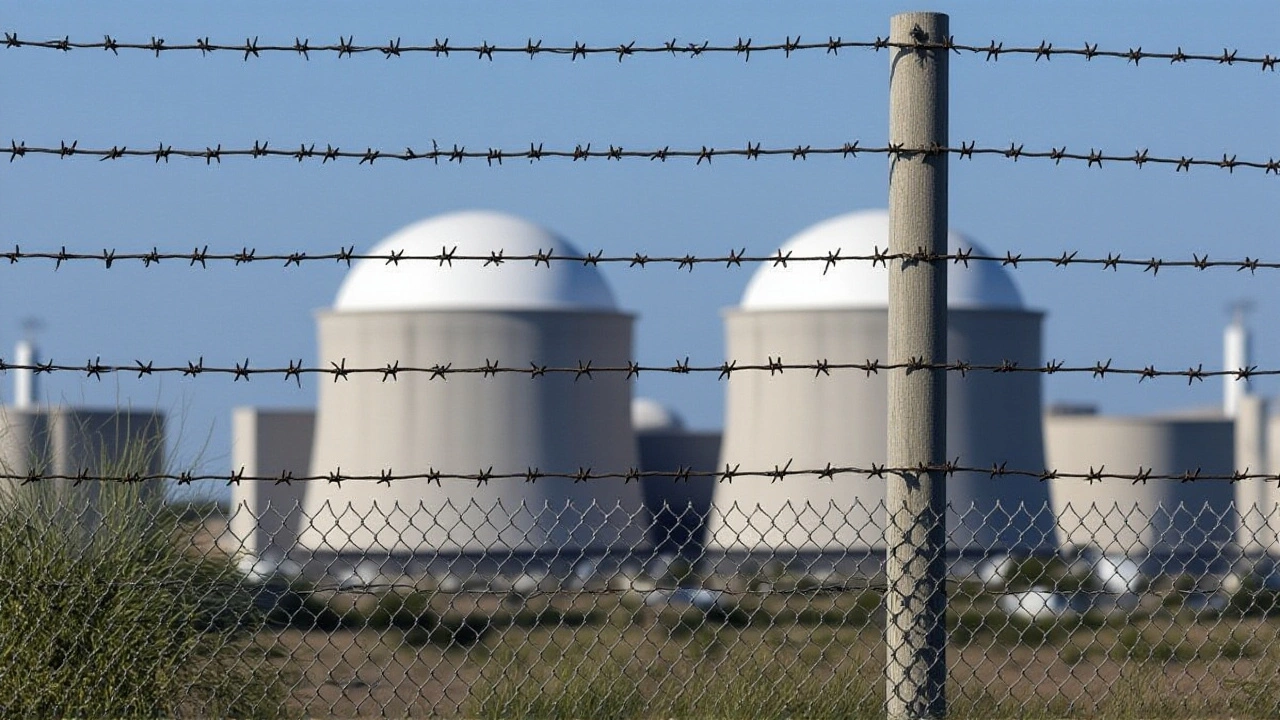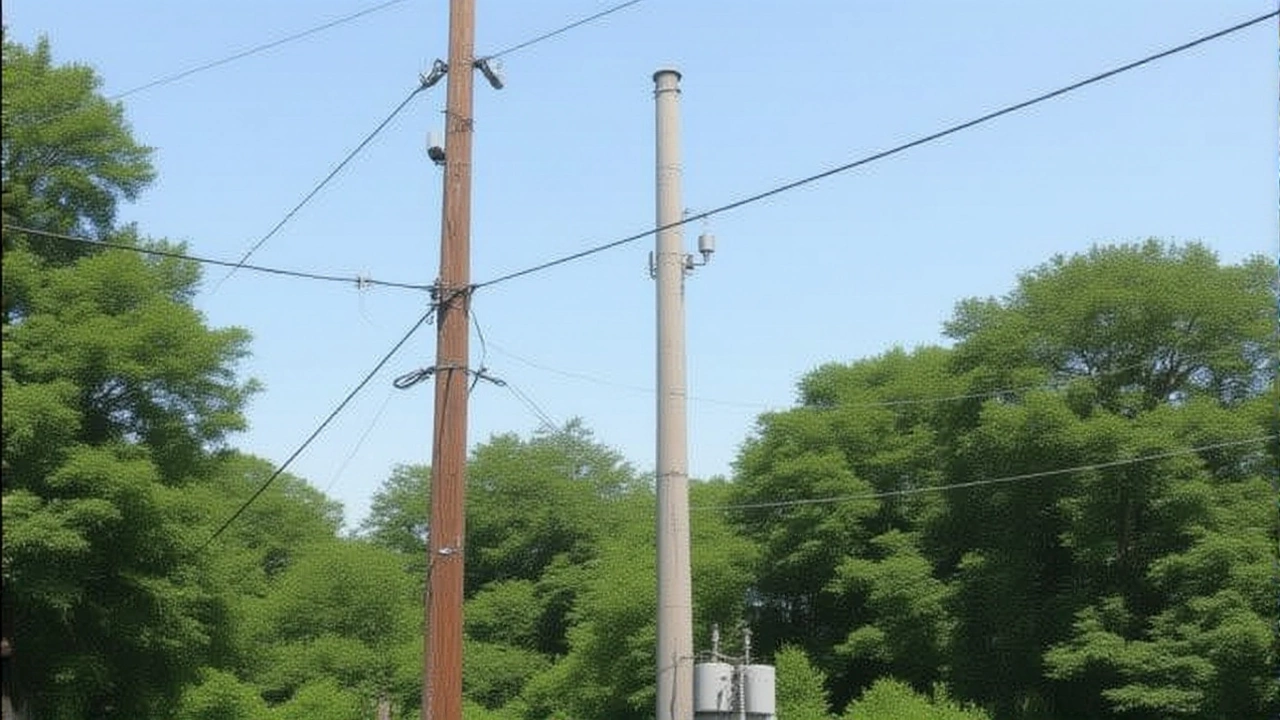When Storm Amy slammed into western Ireland on October 3, 2025, the sky turned into a battering‑ram, ripping power lines from their poles and sending Dublin Airport into a scramble. The worst‑hit parishes in County Mayo saw tens of thousands of homes flicker into darkness, while travellers watched flights disappear from the board. Why it matters: millions of commuters, businesses and emergency crews were forced to navigate a storm‑swept landscape that still shows signs of damage.
Background: The First Named Storm of the 2025‑26 Season
The Met Office officially christened the system "Storm Amy" on October 1, 2025, marking the start of a particularly aggressive European windstorm season. Neil Armstrong, Chief Forecaster of Met Office warned that Amy would be “an impactful autumn storm for many in Scotland and Northern Ireland, with spill‑over effects for northwest England, Wales and the rest of the UK.” Those forecasts proved prophetic as gusts roared at 148 km/h (91 mph) along the exposed Atlantic coast.
The Raw Force: Winds, Rain and Immediate Damage
In the most exposed coastal strips, sustained winds of 94 km/h (59 mph) battered structures, tore roofs, and sent trees toppling onto roads. Meteorologists at Met Éireann issued red, orange and yellow warnings that covered everything from County Donegal to the sea lanes off Loop Head. The warning boxes were a clear signal: expect violent storm‑force 11 winds between 14:00 and 20:00 GMT.
For residents of Mayo’s rural parishes, the consequence was immediate. Power poles snapped like twigs, and the low‑lying townlands lost electricity just as the night fell. ESB Networks, Ireland’s principal grid operator, reported that the western corridor—Mayo, Donegal, Leitrim, Roscommon and Galway—absorbed the bulk of the outage load.
Power Outages and Water Disruptions: The Grid Struggles
By Saturday, October 4, at 13:35, approximately 49,000 homes and businesses across the Republic remained without power, according to ESB Networks. The utility said two‑thirds of affected customers had already been restored, but warned that “some customers in the worst‑affected areas, including Mayo parishes, may remain without power into the early part of next week.”
In Northern Ireland, the picture was similarly bleak. NIE Networks saw a peak of 65,000 customers without electricity, with 22,000 still dark as of 08:30 GMT on Saturday. Alex Houston, Operations Manager at NIE Networks noted that “the restoration process may take several days, echoing the challenges we faced during Storm Darragh.”
Water services were not immune. Uisce Éireann estimated that roughly 4,000 homes in Donegal were left without running water, prompting the agency to deploy mobile generators and temporary treatment plants.
Transport Chaos: Airports and Flights in Turmoil
Dublin Airport, the island’s main gateway, felt the impact early on Saturday morning. Graeme McQueen, Airport spokesperson at Dublin Airport confirmed that around 20 scheduled flights were canceled, with dozens more delayed as wind‑sheared runways forced crews to pause take‑offs.
Across the North Sea, KLM halted 70 flights to and from Schiphol Airport, while Norway’s western counties—Agder and Vestland—saw more than 14,000 homes plunged into darkness. In Bergen, emergency crews rescued occupants of a Scandic hotel where windows on the fourth and fifth floors threatened to burst from the pressure.

Human Toll: Tragedy in Donegal
The storm’s most heartbreaking moment unfolded in Letterkenny, County Donegal. Gardaí announced that a man in his 40s died in a “weather‑related incident” at his home shortly after 16:15 on October 3. A second man suffered serious injuries nearby, both cases tied directly to the ferocious gusts and falling debris.
Red alerts had been issued for Donegal from 16:00 to 18:00, later downgraded to orange as the storm moved east. The fatalities underscore that while the wind may be invisible, its consequences can be lethally concrete.
Response and Recovery: Agencies Mobilise
Across the island, a coalition of public utilities, emergency services and local authorities moved to restore normalcy. ESB Networks deployed over 200 repair crews, prioritising hospitals, schools and critical infrastructure. In the north, the PSNI (Police Service of Northern Ireland) issued safety notices urging drivers to expect “surface water, flooding, fallen debris or temporary restrictions.”
Anthony Skeffington, Regional Operations Manager for the Northwest, told reporters that “our incident management processes are in place since before the storm hit and crews have mobilised to maintain and restore supplies. Where necessary we have deployed mobile and fixed generators to restore power and plant production.”
Meanwhile, Meteorological agencies continue to monitor a lingering period of gusty conditions. The Met Office expects a “more widespread windy period for the rest of the UK” through the weekend, meaning recovery crews may face additional setbacks.
Looking Ahead: Lessons and Future Precautions
Storm Amy will likely become a benchmark for emergency planning in the west of Ireland. The scale of outages—nearly 50,000 without power in a single day—highlights the vulnerability of aging grid infrastructure in coastal zones. Experts suggest that investment in underground cabling and more robust weather‑resilient design could mitigate future blackouts.
For residents, the storm serves as a reminder to keep emergency kits ready, maintain clear evacuation routes, and stay tuned to local warnings. As power crews work around the clock, the hope is that Mayo and its neighbours will see lights flicker back on by early next week.
Key Facts
- Storm Amy hit Ireland on Oct 3 2025 with gusts up to 148 km/h.
- ≈ 49,000 homes/businesses lost power across the Republic; 22,000 still dark in Northern Ireland.
- 20+ flights canceled at Dublin Airport; KLM canceled 70 flights in the Netherlands.
- One fatality and one serious injury confirmed in Letterkenny, Donegal.
- Restoration expected to continue into the first week of October.

Frequently Asked Questions
How will the power outages affect farmers in Mayo?
With many electric milking machines and water pumps offline, dairy and livestock producers risk losing milk output and herd health. ESB Networks has deployed mobile generators to farms in the most affected parishes, but full restoration may take several days, forcing some farmers to temporarily relocate animals to unaffected farms.
What caused the fatal incident in Letterkenny?
Police reports indicate the man was struck by a large branch that snapped from a wind‑blown tree. The incident occurred shortly after 16:15, when gusts topped 140 km/h, turning everyday objects into dangerous projectiles.
Will Dublin Airport operate normally this weekend?
Graeme McQueen said flights are being rescheduled as weather improves. While most runways are cleared, residual cross‑winds may still cause delays, especially for larger aircraft. Passengers are advised to check airline updates before traveling.
What measures are being taken to prevent similar outages?
Both ESB Networks and NIE Networks are reviewing grid resilience, including accelerated underground cabling projects and the installation of more weather‑proof transformers. Government grants for community‑scale renewable backup systems are also under discussion.
How are water supplies being restored in Donegal?
Uisce Éireann has deployed mobile treatment units and portable generators to affected towns. Crews are repairing burst pipes caused by ground movement, aiming to restore water to the remaining 4,000 homes within 48‑hours.


